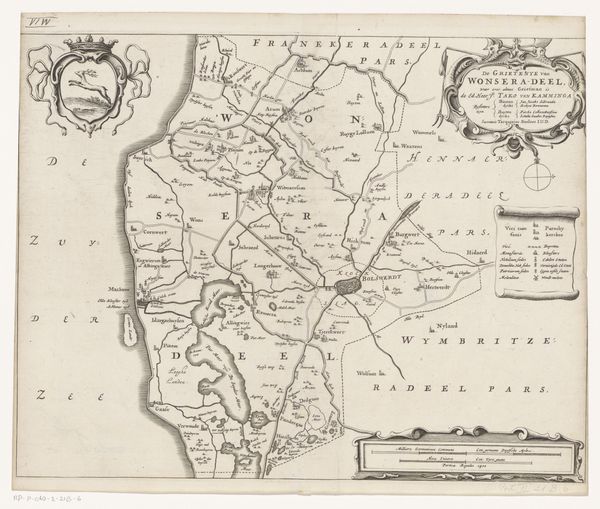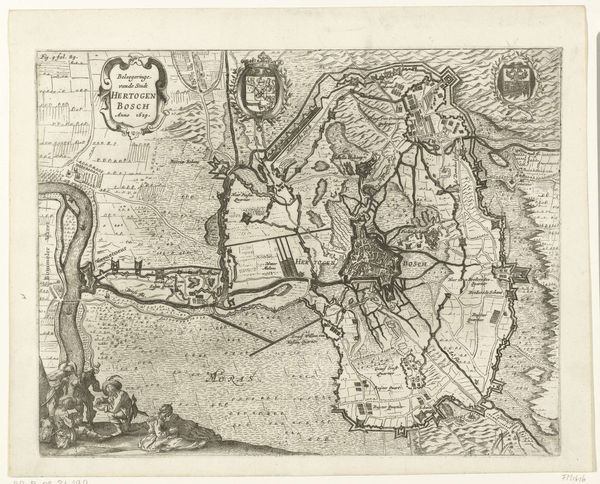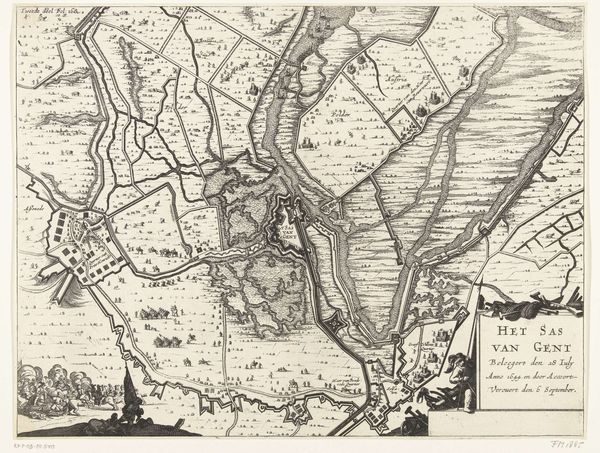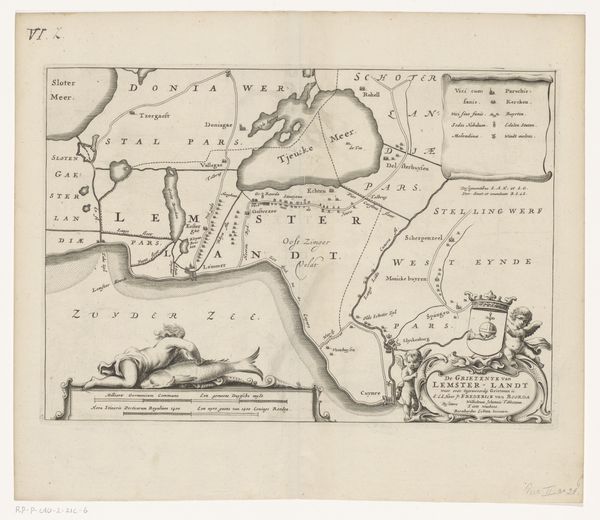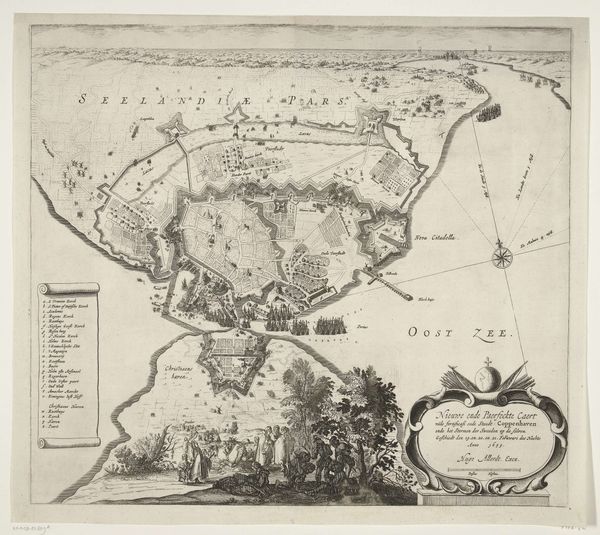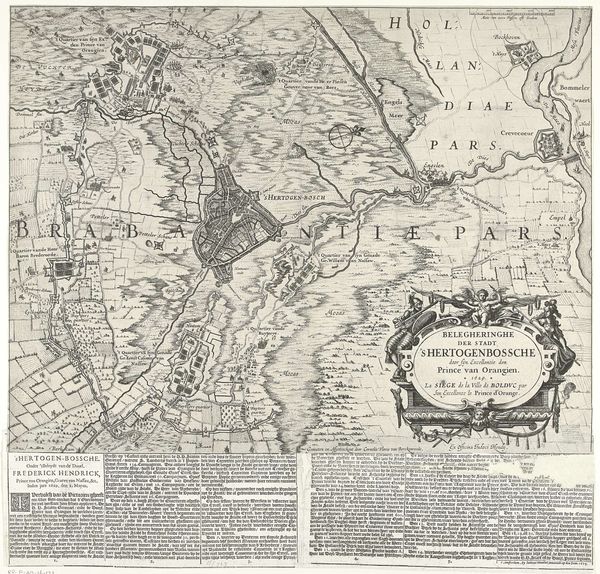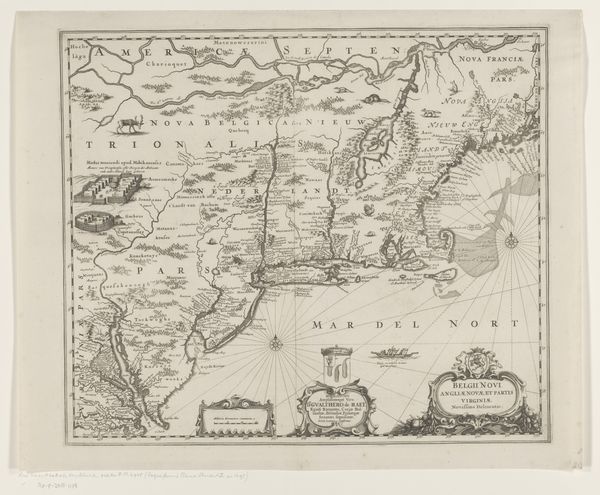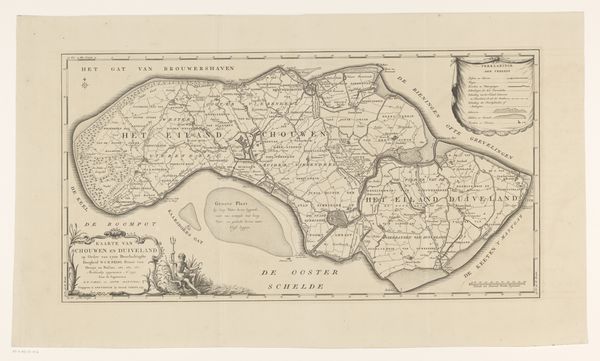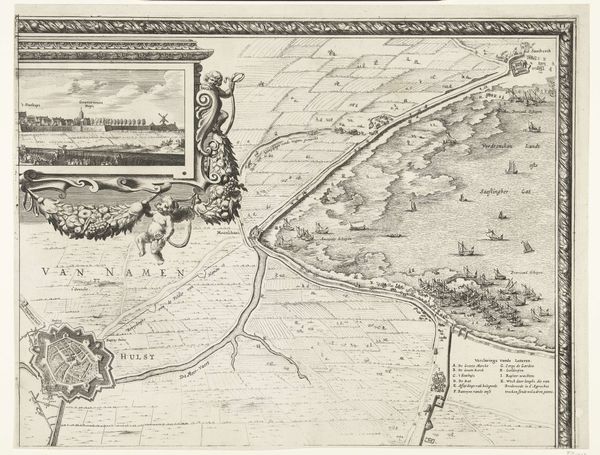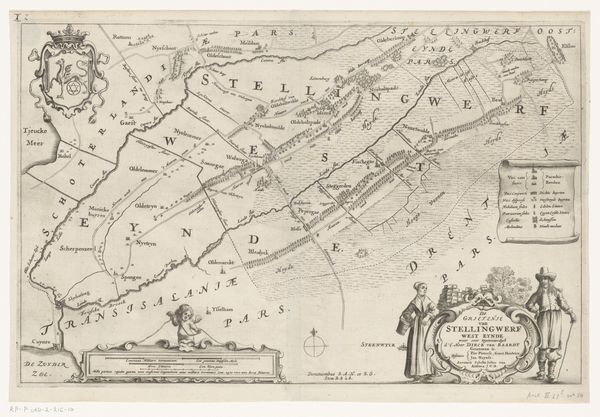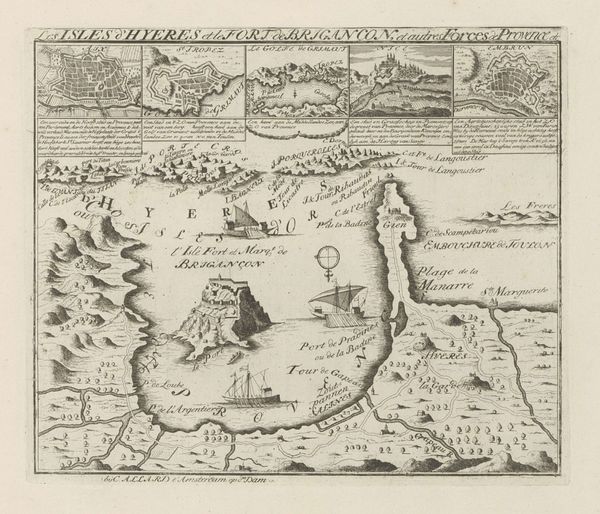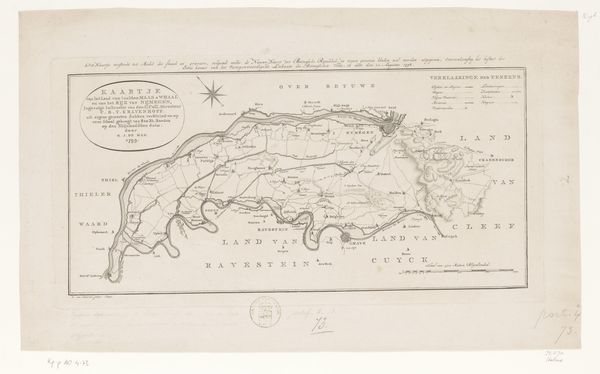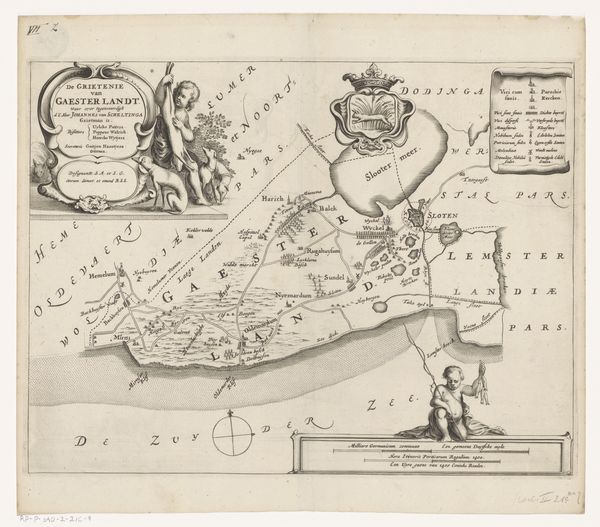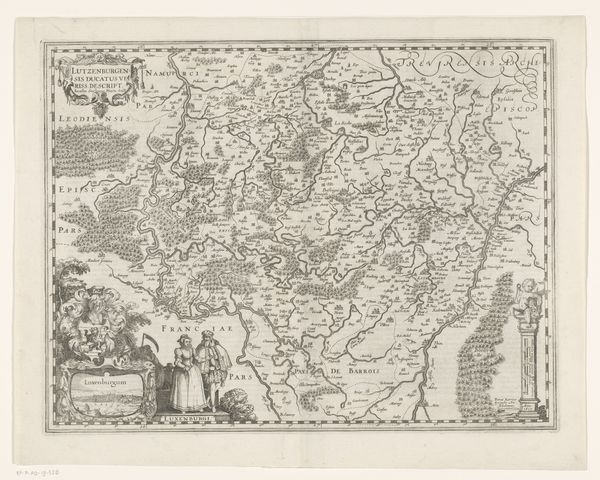
Kaart van het beleg van Den Bosch door Frederik Hendrik, 1629 1683 - 1733
0:00
0:00
anonymous
Rijksmuseum
print, paper, ink, engraving
# print
#
pen illustration
#
pen sketch
#
old engraving style
#
landscape
#
paper
#
ink
#
cityscape
#
genre-painting
#
history-painting
#
northern-renaissance
#
engraving
Dimensions: height 108 mm, width 139 mm
Copyright: Rijks Museum: Open Domain
Curator: Welcome. Here we have an engraving from around 1683-1733, though the scene it depicts is from 1629. It’s titled "Kaart van het beleg van Den Bosch door Frederik Hendrik," or "Map of the Siege of Den Bosch by Frederik Hendrik." The printmaker is anonymous, but the piece resides here at the Rijksmuseum. Editor: My initial impression is one of cool detachment. It's an emotionally barren landscape, despite the obvious suggestion of human activity and conflict. Almost like observing an ant farm. Curator: It’s more than just observing an ant farm, it's about controlling it. Note the strategic overview provided by the meticulous rendering; every fortification, canal, and road is carefully mapped. It speaks to the burgeoning field of military cartography during the Dutch Golden Age, fueled by the Eighty Years' War. We see the labor invested in controlling space through graphical representation. The work involved in this type of printmaking, and the way it disseminates knowledge and power is incredible. Editor: Precisely. Knowledge and control were visually codified and widely circulated through these engravings. Consider how potent the symbolic language of siege warfare is; the walls represent not only the city's physical defenses, but also the identity and autonomy of its inhabitants. Breaking through such symbolic and physical barriers held significant emotional weight, as suggested in religious engravings like "The Walls of Jericho." It connects directly to ideas of power and territorial control. Curator: Absolutely. It also hints at the Dutch Republic’s investment in its image of competency. This print serves almost as propaganda, illustrating the successful engineering and organizational prowess of the Dutch military. We see, on a single page, evidence of highly specialized labor from engineers to printmakers and widespread consumption among the burgeoning middle class. It represents social transformation and military logistics in graphic form. Editor: A point well taken! But it’s the city's implied interior life, its hidden stories within those walls that hold my interest. Consider the psychological implications for those besieged versus the aspirations and desires of those performing the siege, and its translation to symbol through visual representation. The composition is designed not only to illustrate space but also to communicate political and emotional ideas that continue to impact viewers centuries later. Curator: An interesting note to end on. Thank you, as always, for offering such illuminating ideas and commentary on the economic realities behind the scenes. Editor: Thank you for directing my gaze, as usual, towards the symbolic interior of the heart, and making a materialist rethink and review these matters from this prespective.
Comments
No comments
Be the first to comment and join the conversation on the ultimate creative platform.
